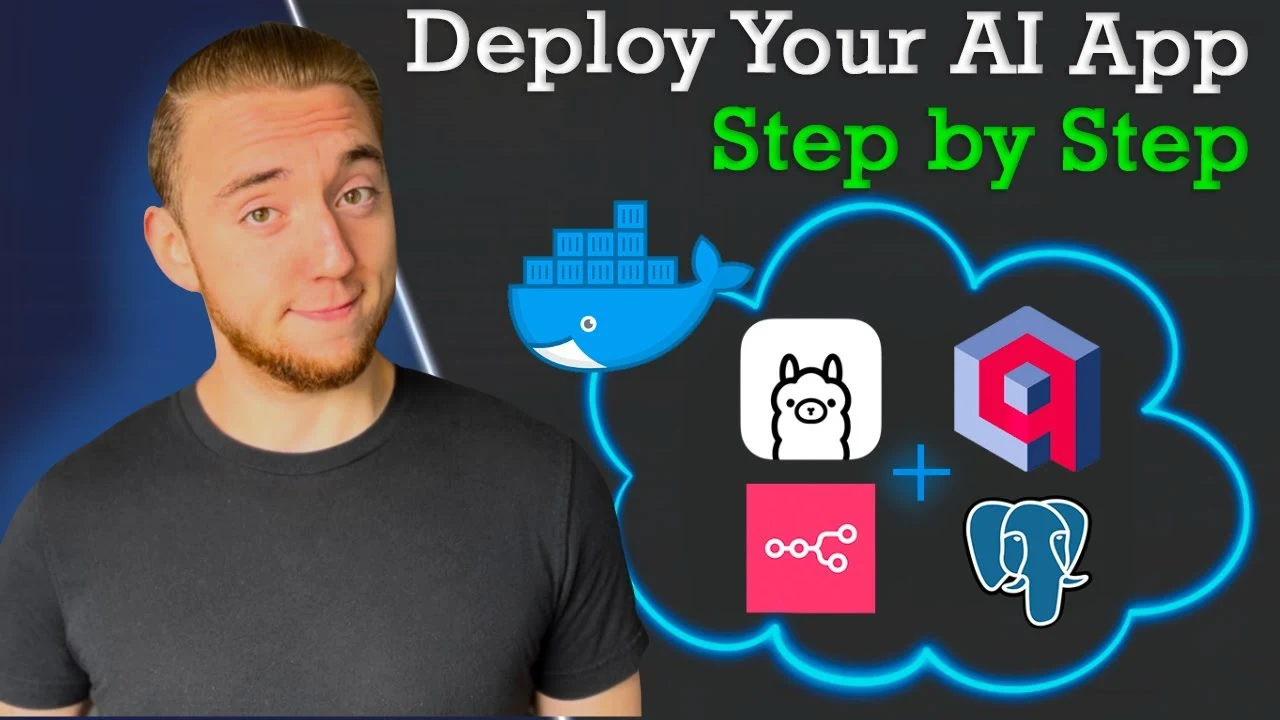Deploying AI applications to the cloud is a crucial step in enhancing their accessibility, usability, and real-world impact. By transitioning AI apps from a local environment to the cloud, developers can ensure that their applications are easily accessible to users worldwide and can scale to meet growing demands. This guide outlines the process of deploying AI applications to the cloud, using the n8n local AI starter kit as an example.
The Importance of Cloud Deployment
Moving AI applications to the cloud is essential for several reasons:
- Accessibility: Cloud deployment makes AI applications accessible from anywhere with an internet connection, allowing users to interact with the application regardless of their location.
- Scalability: Cloud infrastructure allows applications to scale seamlessly, accommodating increased user demand and processing requirements as the application grows.
- Cost-effectiveness: By using cloud resources, developers can avoid the upfront costs of purchasing and maintaining physical hardware, paying only for the resources they consume.
The n8n local AI starter kit, which includes components like Olama, Quadrant, and PostgreSQL, provides a foundational setup that can be expanded for various AI applications. By deploying this starter kit to the cloud, developers can use the full potential of AI technologies and make their applications accessible to a wider audience.
Selecting a Cloud Provider
Choosing the right cloud provider is a critical decision that can impact the performance, cost, and reliability of your AI application. When selecting a provider, consider the following factors:
- Performance: Ensure that the provider offers the necessary computing power and resources to handle the demands of your AI application.
- Cost: Compare pricing plans and consider the long-term costs of running your application on the provider’s infrastructure.
- Reliability: Look for providers with a proven track record of uptime and robust disaster recovery measures to ensure your application remains accessible.
Digital Ocean is often favored for its balance of cost and performance, making it a suitable choice for many AI applications. For more demanding applications, providers like Runpod offer powerful machines capable of handling intensive tasks. Ultimately, your choice should align with your application’s specific requirements and budget constraints.
Deploying AI Apps to the Cloud
Here are a selection of other articles from our extensive library of content you may find of interest on the subject of AI app development and creation :
Deploying Your AI Application
Once you have selected a cloud provider, follow these steps to deploy your AI application:
- Set up a custom URL and configure HTTPS: This involves adjusting DNS settings for domain pointing and using tools like Certbot to install SSL certificates, ensuring secure access to your application.
- Configure firewalls and set up a reverse proxy: Use tools like Nginx to set up a reverse proxy and configure firewalls to protect your application from unauthorized access.
- Clone the necessary Git repository: Clone the repository containing your AI application to your local environment, ensuring you have the latest version of the codebase.
- Configure environment variables: Adjust environment variables to match your deployment needs, ensuring your application can access the necessary resources and services.
- Edit Docker Compose files: Modify the Docker Compose files to define container configurations, ensuring each component of your application is correctly set up and can communicate with other containers.
- Use Docker Compose to manage containers: Use Docker Compose to start your application, access logs, and manage the lifecycle of your containers, simplifying the deployment process and providing a consistent environment.
- Test your deployed application: Thoroughly test your application to ensure all components function as expected, and set up connections within n8n for various services, allowing your application to interact seamlessly with other systems.
By following these steps, you can efficiently deploy your AI application to the cloud, making it accessible and secure for users worldwide. This process provides a robust framework for cloud deployment that can be applied to a wide range of AI applications, extending beyond the local AI starter kit.
Deploying AI applications to the cloud is a vital step in realizing their full potential and making them accessible to users worldwide. By carefully selecting a cloud provider, configuring your application for deployment, and managing containers using tools like Docker Compose, you can ensure that your AI application is scalable, secure, and reliable. As AI continues to advance and play an increasingly important role in various industries, the ability to effectively deploy these applications to the cloud will be essential for developers and organizations alike.
Media Credit: Cole Medin
Filed Under: AI, Guides
Latest TechMehow Deals
Disclosure: Some of our articles include affiliate links. If you buy something through one of these links, TechMehow may earn an affiliate commission. Learn about our Disclosure Policy.
